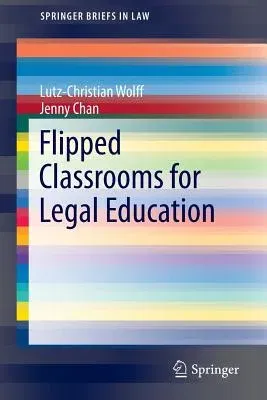Lutz-Christian Wolff
(Author)Flipped Classrooms for Legal Education (2016)Paperback - 2016, 16 February 2016

Qty
1
Turbo
Ships in 2 - 3 days
In Stock
Free Delivery
Cash on Delivery
15 Days
Free Returns
Secure Checkout
Part of Series
Springerbriefs in Law
Print Length
138 pages
Language
English
Publisher
Springer
Date Published
16 Feb 2016
ISBN-10
9811004781
ISBN-13
9789811004780
Description
Product Details
Authors:
Book Edition:
2016
Book Format:
Paperback
Country of Origin:
NL
Date Published:
16 February 2016
Dimensions:
23.39 x
15.6 x
0.84 cm
ISBN-10:
9811004781
ISBN-13:
9789811004780
Language:
English
Location:
Singapore
Pages:
138
Publisher:
Series:
Weight:
222.26 gm

